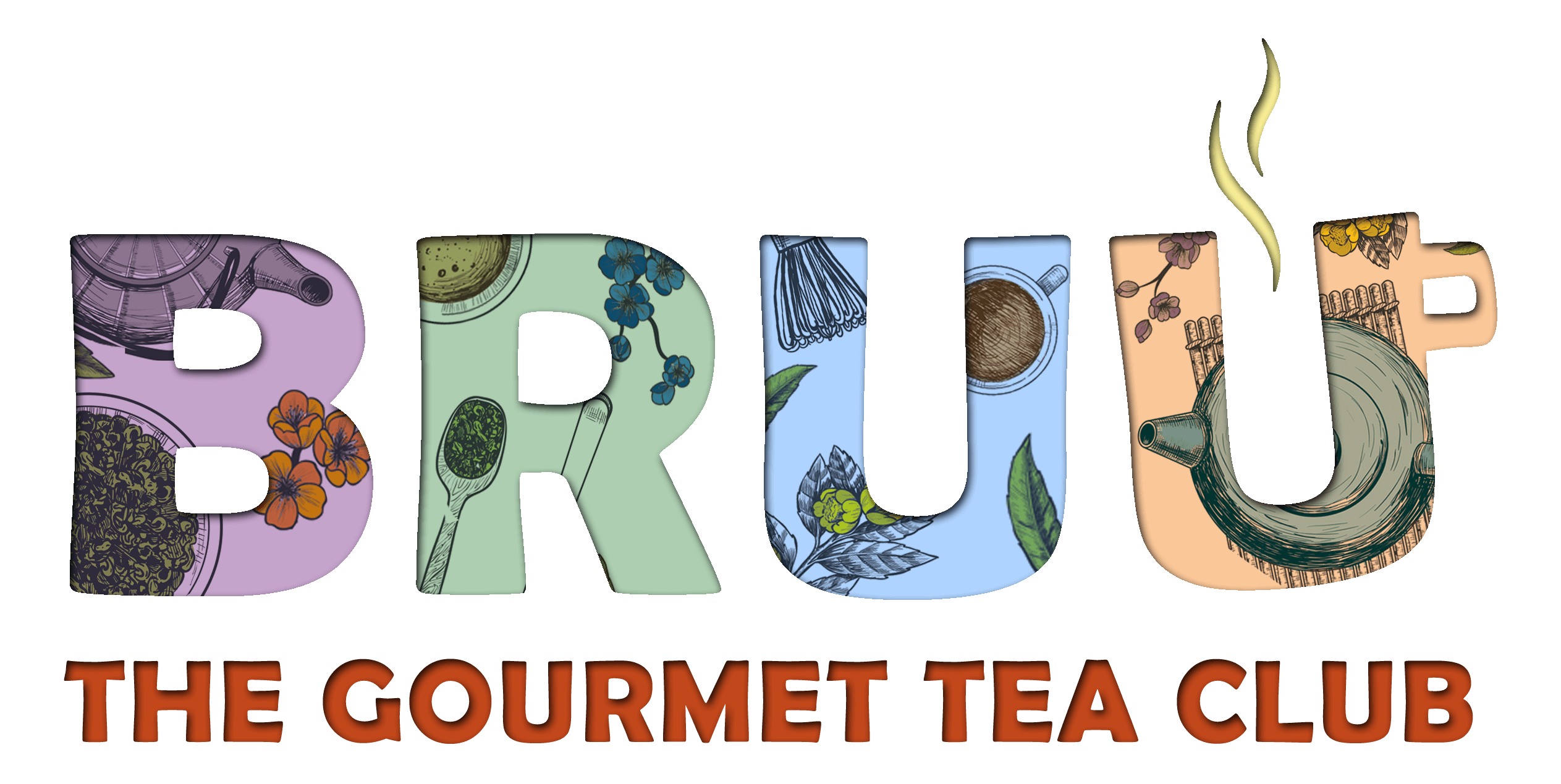Tea and Cardiovascular Disease

Source Tea Advisory Panel
Introduction
Cardiovascular Disease (CVD) is the main cause of death in the UK, accounting for over 230,000 deaths a year, more than one in three people. The main forms of CVD are Coronary Heart Disease (CHD) and stroke. About half of all deaths from CVD are from CHD and about a quarter are from stroke.[1] CHD is the most common cause of death in the UK; around one in five men and one in six women die from the disease.1
Risk Factors associated with CHD
There is no one single cause for CHD, instead the risk of developing it is determined by a combination of factors, some of which are unalterable, others that are potentially modifiable. These risk factors are outlined in Table 1.
Table 1
|
Modifiable Risk Factors |
Non-modifiable risk factors |
|
Hyperlipidaemia (raised cholesterol and triglycerides) Hypertension (high blood pressure) Reduced physical activity Smoking Stress Obesity
|
Family history Sex Age |
Other physiological factors and conditions that may increase the risk of developing CHD,[2] include:-
- Insulin resistance syndrome
- Oxidative stress
- Inflammation
- Endothelial damage
- Vascular dysfunction
- Hyperhomocysteinaemia (high blood homocysteine)
- Platelet aggregation and clotting factors
- Diabetes Mellitus
- Renal Disease
Prevention
Primary prevention of CHD involves adopting a ‘healthy lifestyle’ to control the ‘modifiable’ risk factors. The important aspects of this type of lifestyle include:-
- Quitting smoking
- Taking regular exercise
- Adopting a healthy diet
- Reducing stress and anxiety levels
Dietary Recommendations
A healthy diet[3] that includes the following;-
- Increasing the consumption of oily fish
- Increasing fruit, vegetable and pulses
- Replacing some of the dietary energy coming from total fat with complex starchy foods
- Moderating fat reduction with the use of monounsaturated fats
- Limiting salt intake
- Consuming modest amounts of alcohol
can help to reduce the risk of CHD by altering a range of risk factors in a number of ways. Some of these effects are outlined in Table 2.
Table 2[4]
|
Dietary Intervention |
Physiological Effect |
|
Omega 3 fatty acids (oily fish, rapeseed oil) |
- Anti-inflammatory, protecting against endothelial damage - Anti-thrombotic - Reduces triglycerides - Improves insulin sensitivity - Anti-arrhythmic effects
|
|
Other fatty acids |
- Action of omega–3 fatty acids is improved by lower intakes of saturated fat - Lower saturated fats reduces the risk of thrombosis and reduces serum lipids
|
|
Fruit, vegetables, pulses, nuts
|
- Antioxidants protect against Low Density Lipoprotein (LDL) oxidation - Rich in potassium, may help to control blood pressure - Rich in folic acid, may prevent homocysteine formation - Contain soluble fibre, helping to improve lipid profiles
|
|
Alcohol |
- Improved HDL levels - Possible antioxidant effects
|
The benefits of tea
There is growing evidence suggesting that other dietary components may enhance the general healthy eating recommendations. For example, research is highlighting that there maybe a beneficial relationship between tea drinking and reduced risk of cardiovascular disease.
The evidence for tea and CVD
A number of epidemiological studies[5],[6],[7],[8],[9],[10],[11],[12],[13],[14],[15],[16],[17],[18],[19] have demonstrated that total flavonol/ flavonoid or tea consumption is linked to a decreased risk from heart disease and stroke. However, not all studies have shown similar protective effects.[20],[21],[22],[23]
Inconsistencies from these studies maybe as a result of their design e.g. lack of detail about exposure to tea – quantity, strength and variety, insufficient information about the flavonoid contents of foods and other risk factors for CVD not being considered. These details may influence the end results and consideration of these factors is required for any future research.
In an attempt to reach a conclusion regarding the effect of tea drinking on CHD risk, a couple of meta-analyses have been conducted using results of all the available population studies. Huxley[24] investigated the relationship between dietary flavonol intake and coronary heart disease mortality. Using results from 7 prospective cohort studies, prior to 2001, it was found that individuals in the top third of dietary flavonol intake had a 20% lower risk from CHD mortality, compared to those in the bottom third. The conclusions from a second meta-analysis that included observational studies investigating the relationship between tea drinking and CHD (between 1966 and 2000) suggested that drinking 3 cups of tea a day reduces the risk of myocardial infarction by 11%.[25]
Protective mechanisms of tea
The outcomes from these studies have created great interest in understanding the mechanisms by which tea may confer its cardiovascular protective properties. A number of possible mechanisms that have been put forward, based mainly upon animal and in-vitro studies, include:
- Inhibition of oxidised LDL cholesterol
- Attenuation of the inflammatory process in atherosclerosis
- Reduction in thrombosis
- Promotion of the normal endothelial function
- Blocking of adhesion molecules
- Reduction in plasma total and LDL cholesterol (LDL-C)
These mechanisms are likely to be of relevance in humans although to date results from human studies remain inconclusive:
- Anti-oxidant actions
- The anti-oxidant capacity of tea flavonoids has been well established in vitro, and from human studies it appears they also exhibit antioxidant capacity in vivo (for further details on this subject please refer to the fact sheet ‘Tea and Antioxidant Properties’)
- The prevention of LDL oxidation by tea has been demonstrated in a number of human studies[26],[27],[28] although others have shown no such effect[29],[30],[31],[32],[33]
- Attenuation of the inflammatory process in atherosclerosis
- Effect on thrombosis/ platelet aggregation
- There are mixed data from human studies regarding the effects of tea consumption on platelet aggregation. In two studies tea27,[36] consumption reduced P-selectin, a marker of in vivo platelet aggregation, but did not influence other adhesion markers in one of these studies.36 However, no effect was seen on ex vivo platelet function among healthy people nor patients with coronary artery disease.[37],[38] Furthermore, earlier studies of de Maat et al[39] and Vorster et al[40] also observed no significant effects on fibrinogen and fibrinolytic factors following tea consumption
- Endothelial function
- The endothelium is the layer of cells lining various blood vessels in the body. A normal endothelium plays a critical role in regulating vascular function and increasing evidence is suggesting that any alterations in endothelial function can contribute to cardiovascular disease
- Several human studies have demonstrated that tea has beneficial effects on endothelial function
- In a study by Duffy et al, subjects with coronary artery disease, who consumed 900ml of black tea a day had improved endothelial function.[41]
- Hodgson et al[42] found improvements in brachial artery flow-mediated dilation in healthy subjects with modest hypercholestrolaemia following the consumption of 5 cups of black tea a day for 5 weeks.
- Hirata et al[43] found improvements in coronary vessel function, as determined by coronary flow velocity reserve, in a group of 10 healthy volunteers following acute black tea consumption
- It has been suggested that other flavonoids or polyphenolic compounds in tea, aside from catechins, are responsible for the effects on endothelial function following a study that found no changes in endothelium function despite an associated rise in plasma catechins after consuming black tea and yet baseline endothelial function was associated with dietary flavonoid intake.[44]
- Reduction in blood lipids
- Some epidemiological studies seem to indicate that tea can reduce serum cholesterol8,21,[45],[46],[47],[48].
- Results from human clinical trials are inconsistent:
- In mildly hypercholesterolemic adults who were following a low fat diet, consumption of five servings of black tea a day for a 3 week period reduced total cholesterol by 3.8% when compared to water, as well as reducing LDL cholesterol by 7.5%.33
- In another study investigating the effect of green tea on plasma lipid profile, it was found that there was a modest, although significant decrease in LDL cholesterol in healthy volunteers following the consumption of 2 cups of green tea a day after 42 days.[49]
- However, other studies have shown no such effect on blood lipids28,29,30,31,32,[50]
- Other mechanisms
Other factors that have been proposed for tea’s potential cardioprotective properties include beneficial effects on
- Blood pressure; however results from epidemiological studies and human clinical trials are inconsistent.
- A recent population study in China examined the effect of habitual tea consumption on hypertension. Subjects who drank more than 120ml of tea/ day for at least a year had a reduced risk of developing hypertension compared to nonhabitual tea drinkers. This association remained after controlling for confounding factors.[51] Results from other population studies also suggest that tea drinking may lower blood pressure.[52],8
- However, short term regular ingestion of tea in human intervention trials has not been found to alter blood pressure.41,42,50,[53] One explanation for this is that any potential benefits of tea on blood pressure may take longer to exert than the duration of the short term studies. In addition, when tea is consumed with a meal, rather than in the fasting state, the effect on blood pressure maybe different. This was observed in a recent intervention trial, which found that when subjects who had a history of coronary artery disease consumed black tea with a meal, the consumption of the meal negated the acute increase in systolic blood pressure that was found when tea was ingested in the fasting state.[54] This may contribute to the lack of a blood pressure –raising effect of regular tea consumption.
- Homocysteine; it has been suggested that tea flavonoids may influence plasma homocysteine levels.
- Population studies have shown protective effects.[55],[56],[57]
- Research in human trials is very limited in this area, however in one randomised crossover study consisting of 22 subjects, there was no significant difference in plasma homocysteine levels following the consumption of black tea compared to hot water. However there were inter individual differences in methylation.[58] Some homocysteine relationships are believed to have a strong genetic component, and this may account for the varied findings in investigating a relationship with tea consumption.
In summary
From a number of epidemiological studies investigating the relationship between tea drinking and cardiovascular disease, it is reasonable to conclude that drinking both green and black tea is compatible with dietary advice to help protect against CVD. However, although the scientific evidence for the mechanisms by which tea exerts its positive health effects is growing, it is not yet conclusive and represents promising areas for future research in longer term, well controlled human trials.
References:
[1] Petersen S, Peto V, Scarborough P and Rayner M (2005) Coronary heart disease statistics. BHF: London
[2] Stanner S (2005) Cardiovascular Disease: Diet, Nutrition and Emerging Risk Factors. BNF Task Force Report
[3] Department of Health (1994) Nutritional Aspects of Cardiovascular Disease, Report of the Cardiovascular Review Group of the Committee of Medical Aspects of Food Policy (COMA). Report No. 46. London: HMSO
[4] British Nutrition Foundation. Diet and Heart Disease: A round table of factors. London: Chapman and Hall, 1997
[5] Sesso HD, et al. (1999) Coffee and tea intake and the risk of myocardial infarction. Am J Epidemiol, 149(2); 162-167
[6] Keli SO, et al. (1996) Dietary flavonoids, antioxidant vitamins, and incidence of stroke: the Zutphen study. Arch Intern Med, 156(6); 637-642
[7] Knekt P, et al. (1996) Flavonoid intake and coronary mortality in Finland: a cohort study. BMJ 312; 478-81,
[8] Stensvold I, et al. (1992) Tea consumption. Relationship to cholesterol, blood pressure and coronary and total mortality. Preventative Med 21; 546,
[9] Yochum L, et al. (1999) Dietary flavonoid intake and risk of cardiovascular disease in postmenopausal women. Am J Epidemiol, 149(10); 943-9,
[10] Hertog MGL, et al. (1993) Dietary antioxidants flavonoids and risk of coronary heart disease: the Zutphen Elderly Study. Lancet,155; 381
[11] Hertog MGL, et al. (1995) Flavonoid intake and long-term risk of coronary heart disease and cancer in the seven countries study Arch Int Med 155; 381
[12] Hirvonen, T., et al. (2001) Intake of flavonols and flavones and risk of coronary heart disease in male smokers. Epidemiology, 12; 62-7.
[13] Geleijnse, J.M., et al., (2002) Inverse association of tea and flavonoid intakes with incident myocardial infarction: the Rotterdam Study. Am J Clin Nutr 75; 880-6.
[14] Arts, I.C., et al., (2001) Catechin intake might explain the inverse relation between tea consumption and ischemic heart disease: the Zutphen Elderly Study. Am J Clin Nutr 74; 227-32.
[15] Arts, I.C., et al., (2001) Dietary catechins in relation to coronary heart disease death among postmenopausal women. Epidemiology, 12; 668-75.
[16] Hakim et al., (2002) Tea consumption and the prevalence of coronary heart disease in Saudi adults: results from a Saudi national study. Prev Med, 36; 64-70.
[17] Mukamal, K.J., et al (2002) Tea consumption and mortality after acute myocardial infarction. Circulation 105; 2476-81.
[18] Sano J, et al (2004) Effects of green tea on the development of coronary artery disease. Circ J 68; 665-70
[19] Mennen L (2004) Consumption of foods rich in flavonoids is related to a decreased cardiovascular risk in apparently healthy French women. J Nutr 134; 923-926
[20] Sesso, H.D.,et al. (2003) Flavonoid intake and the risk of cardiovascular disease in women. Am J Clin Nutr,77; 1400-1408.
[21] Woodward M, et al (1999) Coffee and tea consumption in the Scottish Heart Health Study follow up: conflicting relations with coronary risk factors, coronary disease and all cause mortality. J Epidemiol Comm Health 53: 481-7
[22] Hertog MG, et al (1997) Antioxidant flavonols and ischaemic heart disease in a Welsh population of men: the Caerphilly study. Am J Clin Nutr 65: 1489-94
[23] Rimm EB, et al (1996) Relation between intake of flavonoids and risk for coronary heart disease in male health professionals. Ann Intern Med 125: 384-9
[24] Huxley, R.R. and H.A. Neil, (2003) The relation between dietary flavonol intake and coronary heart disease mortality: a meta-analysis of prospective cohort studies. Eur J Clin Nutr, 57; 904-8.
[25]Peters, U., C. Poole, and L. Arab, (2001) Does tea affect cardiovascular disease? A meta -analysis. Am J Epidemiol, 154; 495-503.
[26] Hodgson, J. M., Puddey, I. B., Croft, K. D., Burke, V., Mori, T. A., Caccetta, R. A. & Beilin, L. J. (2000) Acute effects of ingestion of black and green tea on lipoprotein oxidation. Am. J. Clin. Nutr. 71; 1103-1107
[27] Lee W, et al (2005) Long-term effects of green tea ingestion on atherosclerotic biological markers in smokers. Clin Biochem 38; 84-7
[28] Sung H, et al (2005) The effects of green tea ingestion over four weeks on atherosclerotic markers. Ann Clin Biochem 42; 292-7
[29] van het Hof KH, et al (1997) Consumption of green or black tea does not increase resistance of low-density lipoprotein to oxidation in humans. Am J Clin Nutr 66; 1125–32.
[30] Ishikawa T, Suzukawa M, Ito T, et al. (1997) Effect of tea flavonoid supplementation on the susceptibility of low-density lipoprotein to oxidative modification. Am J Clin Nutr 66; 261–6.
[31] Princen HM, van Duyvenvoorde W, Buytenhek R, et al. (1998) No effect of consumption of green and black tea on plasma lipid and antioxidant levels and on LDL oxidation in smokers. Arterioscler Thromb Vasc Biol 18; 833–41
[32] McAnlis GT, McEneny J, Pearce J, Young IS. (1998) Black tea consumption does not protect low density lipoprotein from oxidative modification. Eur J Clin Nutr 52; 202–6
[33] Davies, M.J., et al., (2003) Black tea consumption reduces total and LDL cholesterol in mildly hypercholesterolemic adults. J Nutr, 133; 3298S-3302S.
[34] Song Y, et al (2005) Associations of dietary flavonoids with risk of type 2 diabetes, and markers of insulin resistance and systemic inflammation in women: a prospective study and cross-sectional analysis. J Am Coll Nutr 24; 376-84
[35] Windlansky ME, et al (2005) Effects of black tea consumption on plasma catechins and markers of oxidative stress and inflammation in patients with coronary artery disease. Free Radic Biol Med 38; 499-506
[36] Hodgson, J.M., et al., (2001) Effects of regular ingestion of black tea on haemostasis and cell adhesion molecules in humans. Eur J Clin Nutr, 55; 881-6
[37] Hodgson, J.M., et al., (2002) Acute effects of ingestion of black tea on postprandial platelet aggregation in human subjects. Br J Nutr, 87; 141-5.
[38] Duffy, S.J., et al., (2001) Effect of acute and chronic tea consumption on platelet aggregation in patients with coronary artery disease. Arterioscler Thromb Vasc Biol, 21; 1084-9.
[39] de Maat, M.P., et al., (2000) Consumption of black and green tea had no effect on inflammation, haemostasis and endothelial markers in smoking healthy individuals. Eur J Clin Nutr, 54; 757-63.
[40] Vorster, H., et al., (1996) Tea drinking and haemostasis: a randomized, placebo-controlled, crossover study in free-living subjects. Haemostasis, 26; 58-64.
[41] Duffy SJ, et al. (2001) Short and long-term black tea consumption reverses endothelial dysfunction in patients with coronary artery disease. Circulation 104; 151-156
[42] Hodgson JM, et al (2002) Regular ingestion of black tea improves brachial artery vasodilator function. Clin Sc 102; 195-201
[43] Hirata K et al (2004) Black tea increases coronary flow velocity reserve in healthy male subjects. Am J Cardiol 93; 1384-8
[44] Windlansky ME, et al (2005) Effects of black tea consumption on plasma catechins and markers of oxidative stress and inflammation in patients with coronary artery disease. Free Radic Biol Med 38; 499-506
[45] Kono S, et al (1996) Relation of green tea consumption to serum lipids and lipoproteins in Japanese men. J of Epidemiology 6(3): 128-33
[46] Kono S, et al (1992) Green tea consumption and serum lipid profiles: a cross-sectional study in northern Kyushu, Japan. Prev Med, 21(4): 526-31
[47] Imai K, et al (1995) Cross sectional study of effects of drinking green tea on cardiovascular and liver diseases. BMJ 310; 693-6
[48] Tokunga S, et al (2002) Green tea consumption and serum lipids and lipoproteins in a population of healthy workers in Japan. Ann Epidemiol 12; 157-65
[49] Erba D, et al (2005) Effectiveness of moderate green tea consumption on antioxidative status and plasma lipid profile in humans. J Nutr Biochem 16; 144-9
[50] Bingham, S. A., Vorster, H., Jerling, J. C., Magee, E., Mulligan, A., Runswick, S. A. & Cummings, J. H. (1997) Effect of black tea drinking on blood lipids, blood pressure and aspects of bowel habit. Brit. J. Nutr. 78: 41-55.
[51] Yang LC, et al (2004) The protective effect of habitual tea consumption on hypertension. Arch Int Med 164; 1534-40
[52] Hodgson JM, et al (2003) Tea intake is inversely related to blood pressure in older women. J Nutr; 133; 2883–2886.
[53] Hodgson JM, et al (1999) Effects on blood pressure of drinking green and black tea. J Hypertens 17; 457–463.
[54] Hodgson JM, et al (2005) Acute effects of tea on fasting and postprandial vascular function and blood pressure in humans. J Hypert 23; 47-54
[55] Rasmussen, L.B., et al. (2000) Folate intake, lifestyle factors, and homocysteine concentrations in younger and older women. Am J Clin Nutr, 72; 1156-63.
[56] de Bree A, Verschuren WM, Blom HJ, Kromhout D. (2001) Lifestyle factors and plasma homocysteine concentrations in a general population sample. Am J Epidemiol 154; 150–4.
[57] Nygard O, Refsum H, Ueland PM, et al. (1997) Coffee consumption and plasma total homocysteine: The Hordaland Homocysteine Study. Am J Clin Nutr 65; 136–43.
[58] Hodgson, J.M., et al. (2003) Can black tea influence plasma total homocysteine concentrations? Am J Clin Nutr 77; 907-11.



